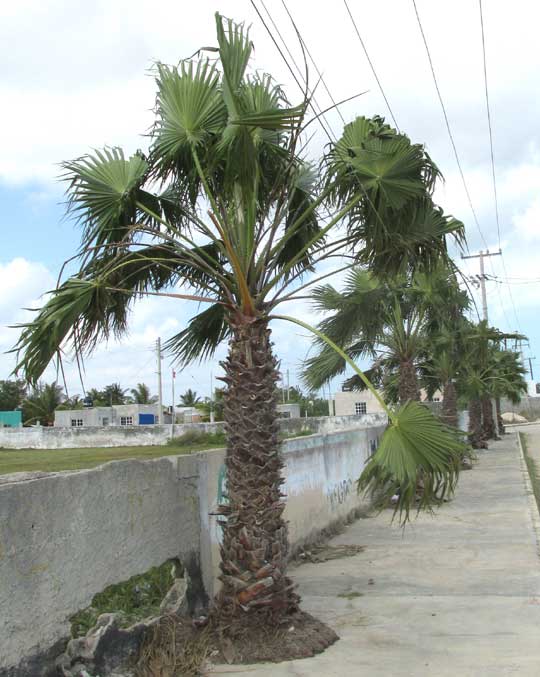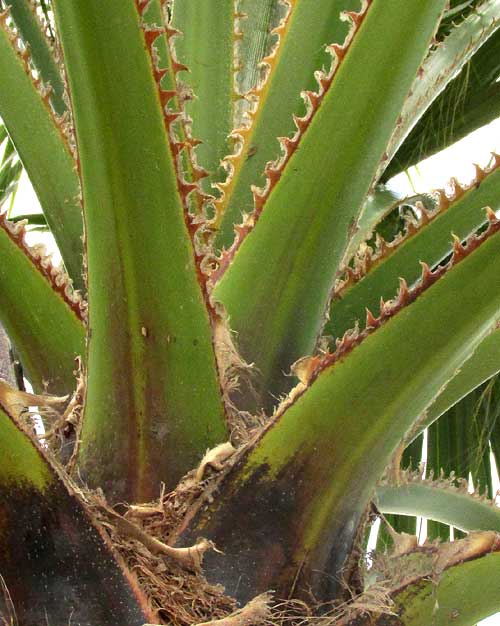Excerpts from Jim Conrad's
Naturalist Newsletter
from the April 5, 2015 Newsletter issued from Río Lagartos, on the Yucatan Peninsula's northern coast (~N21.60°, ~W88.16°), Yucatán state, MÉXICO
MEXICAN FAN PALM
Down the street from Río Lagartos's fútbol stadium and the Mexican Palmetto in front of it stand some shorter palms, also fan palms, but different. Below, you can see them along the fútbol field, their fingerlike "surface roots" advancing onto the sidewalk's surface:

Unlike the Mexican Palmetto's fronds in which the petiole extends deep into the blade, petioles on these fronds stop abruptly at the base of the blade, producing a triangular, scale-like appendage known as a hastula, as seen below:

Also unlike the smooth petioles of the Mexican Palmetto's fronds, these tree's petioles are heavily armored with sharp, triangular spines, as seen below:

In that picture it's worth noting that the spines and petiole bases are conspicuously dark brown, for a very similar species lacks this coloring. A shot of the trunk top with old, dried-up fruiting clusters arching downward on the picture's left side is shownbelow:

In that image you see that someone regularly cuts off old fronds, leaving a rough covering of petiole bases enveloping the trunk. This pruning robs the trees one of their most distinctive and handsome features, which is that as dried-up fronds dangle downward, they form a distinctive "shag" around the trunk, like a hula dancer's grass skirt.
And just for the fun of it, old flowering clusters bore a few dried-up flowers but, curiously, no fruits, so below you can see one of this tree's desiccated blossoms with its predictable six stamens and a slender style surrounded by a papery, three-lobed corolla, and subtended by a three-toothed calyx:

This is the Mexican Fan Palm, or Washingtonia Palm, WASHINGTONIA ROBUSTA, not native to the Yucatan, but at home in deserty northwestern Mexico, in the states of Sonora and Baja California. A similar species, Washingtonia filifera, can be confused with it, and sometimes hybridizes with it, causing even more naming confusion. The Mexican Fan Palm's brown petiole bases and spines, and its trunk base which tends to bulge outward, help separate the species from Washingtonia filifera.
Both of these Washingtonia species are planted throughout the world's warmer regions. In the US I read that our Mexican Fan Palm is more commonly planted in Florida, while Washingonia filifera is more common in the southwestern states, though both species can turn up in both places.